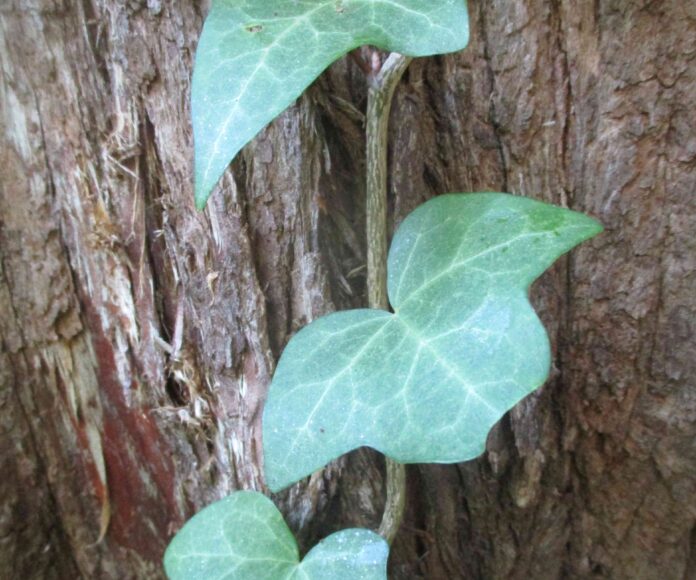Regardless of how appealing many of them are in home gardens and landscapes, vines are flagrantly exploitative. They rely on shrubbery, trees or anything they can climb on for support. As they reach the tops of their supports, they extend their foliar canopies above. Vines have no reservations about overwhelming and maybe killing their own supporters.
Vines climb with clinging roots, twining stems, tendrils, twining leaves, or even thorns or spines. Some vines are annuals or perennials. The most aggressive or destructive sorts are woody plants. Some creep along the ground while young, and then climb when they find support. Some mature to support their own weight as they lose their original support.
English ivy and Algerian ivy, in their juvenile forms, can be practical ground cover plants. However, when they encounter shrubbery, trees or buildings, they become clinging vines that can overwhelm their supports, and ruin infrastructure. As they mature, clinging vines evolve into shrubbier and obtrusively bulky adult growth that blooms and produces seed.
Boston ivy, which incidentally is not actually ivy, is more practical as a clinging vine than the other ivies. It does not grow as ground cover anyway. Nor does it develop bulky adult growth. However, it also has limitations. Because it attaches to its supports with clinging tendrils, it is only practical for surfaces that it can not wreck, such as reinforced concrete.
Bougainvillea is a delightful and shrubby vine. It neither clings to surfaces nor grips onto support by twining. It simply generates long and vigorous canes that eventually lie down onto its surroundings. Long thorns help to anchor these canes in place. Canes should be satisfied with trellises, but sometimes mingle with shrubbery or trees, or spill over fences.
Carolina jessamine, lilac vine and mandevilla climb with twining stems, but are relatively docile. Star jasmine, which performs well both as a ground cover plant and as a climbing vine, can crush flimsy lattice with its twining vines. Wisteria might crush substantial trellis beams. Passion flower climbs with wiry tendrils, but can be overwhelmingly voluminous.
Highlight: red passion flower vine
The mostly white and blue common passion flower likely remains the most popular. After all, it is the weirdest. Elaborate and disproportionate floral parts imply that it is of another planet. Red passion flower, Passiflora racemosa, although less peculiar, is perhaps a bit more colorful. Its brick red flowers bloom randomly for as long as the weather remains warm.
Flowers are about three or four inches wide. They develop in open racemes that seem to spread out somewhat evenly over the exterior of their foliage. Bloom is not profuse, but is somewhat continuous until autumn.
The lushly evergreen foliage can get shabby through winter, or completely ruined by just mild frost. It regenerates vigorously though. Aggressive pruning as winter finishes delays bloom, but promotes vigorous growth. Vines can potentially reach more than 20 feet. Fruit is rare without manual pollination. Fruit flavor can be bland without tropical warmth.










